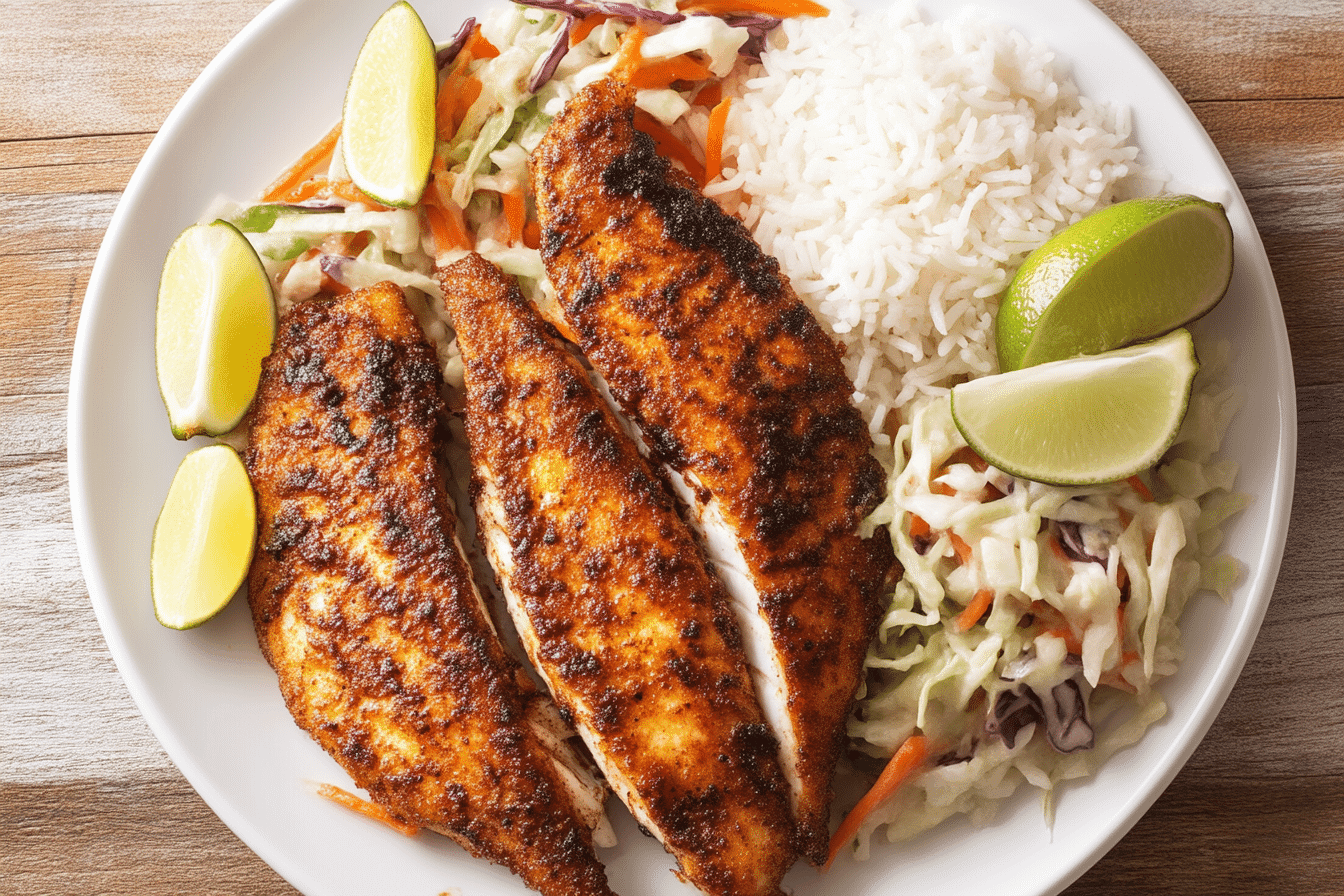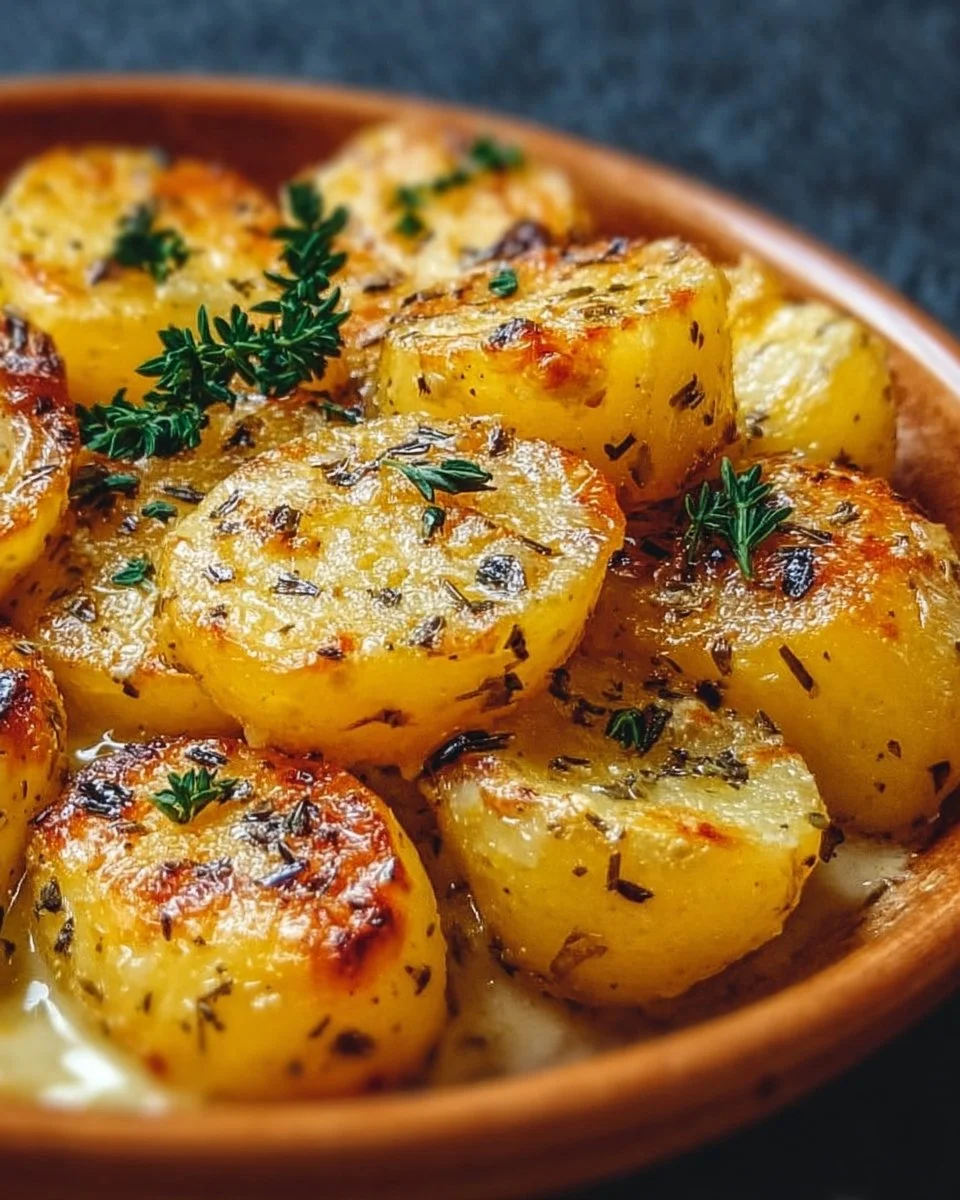There’s something wildly satisfying about a recipe that hits hard on flavor but barely touches your time. This jerk fish recipe does exactly that. It’s smoky, spicy, and perfectly crisp on the outside, with tender, flaky fish inside. If you’ve ever wondered what to do with that spice mix hiding in your pantry or needed a quick Caribbean dinner, this is it. With the focus keyword jerk fish appearing throughout, we’re diving into how to make this dish weeknight-easy and utterly unforgettable. Let’s start with the story of how this bold Jamaican favorite became one of my go-to meals.
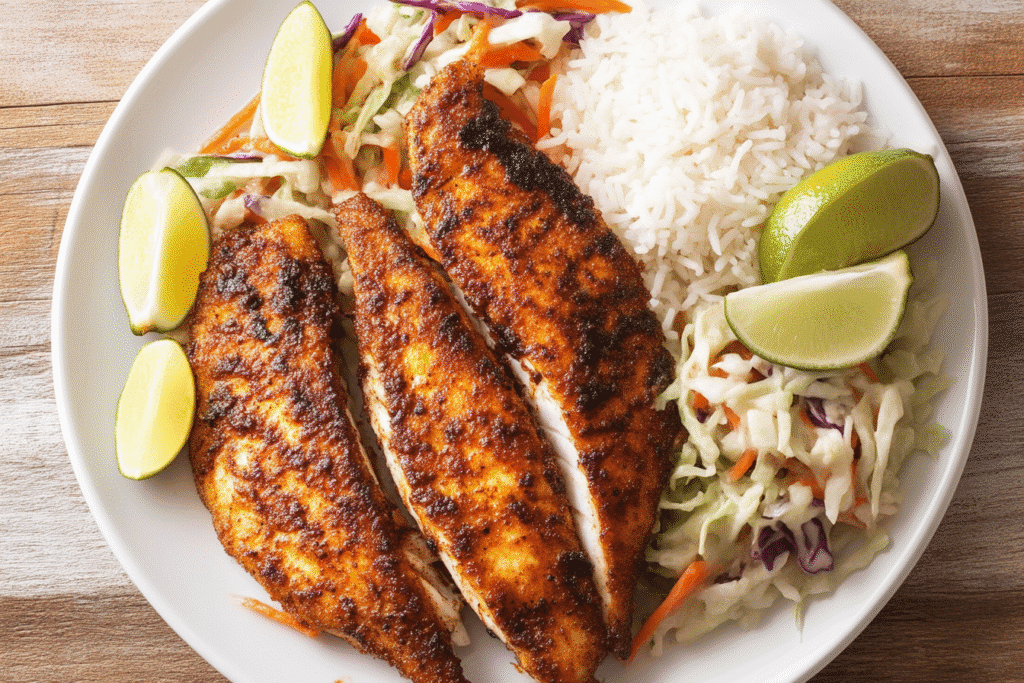
I still remember the first time I made jerk fish. It was a Tuesday night, I was beaten, and I had three hungry kids bouncing off the walls. I’d defrosted some snapper with no real plan—until I remembered a half-empty jar of jerk seasoning in the cupboard. In under 10 minutes, something incredible hit the table. That’s how jerk fish became a repeat star in our kitchen.
With my Croatian roots and Midwest habits, I’d always leaned into comfort food. But jerk seasoning? That’s comfort with an edge. It’s spicy, yes, but balanced with warm cinnamon, allspice, and a touch of sweetness. This jerk fish recipe quickly became my answer to “What’s for dinner?” when time’s tight but taste still matters. The real magic? It’s made in one pan and done in under 10 minutes.
Now I always keep the spice mix ready because jerk fish doesn’t need much to shine. Any thin white fish fillet will work. And when I serve it with coconut rice and Jamaican slaw, it feels like we’ve taken a tropical trip, even if we’re still in snow boots.
If you’re looking for more weeknight wonders like this, you’ll love dishes like this easy pan-seared cod with lemon butter or my grilled chicken thighs with mango salsa. These recipes pair perfectly with the bold Caribbean spirit of jerk fish.
Table of Contents
Table of Contents
Choosing the Right Fish for Jerk
Best Fish for Jerk Cooking Techniques
When it comes to jerk fish, not all fillets are created equal. To get that golden crust and juicy inside in just a few minutes, you need fish that’s thin and firm. The best options are white fish fillets that cook quickly and hold their shape. Snapper, tilapia, cod, or mahi-mahi are excellent choices. They’re easy to find, affordable, and soak up the jerk seasoning beautifully.
Thickness matters more than type. The sweet spot? Fillets are around 1.5cm (or 0.6 inches) thick. This lets the spice crust develop without burning, while the fish stays moist. Anything thicker will need longer cooking and might overdo the seasoning. If you’re working with thicker fillets, you can always slice them in half horizontally or pound them out gently to even thickness.
And don’t worry if you’ve only got salmon or even shrimp on hand. Jerk seasoning is just as spectacular on those. It’s bold enough to stand up to richer flavors and still make each bite shine. If you’re a fan of quick weeknight seafood dinners, try this honey-garlic shrimp skillet next it’s a similar “big flavor, fast” kind of recipe.
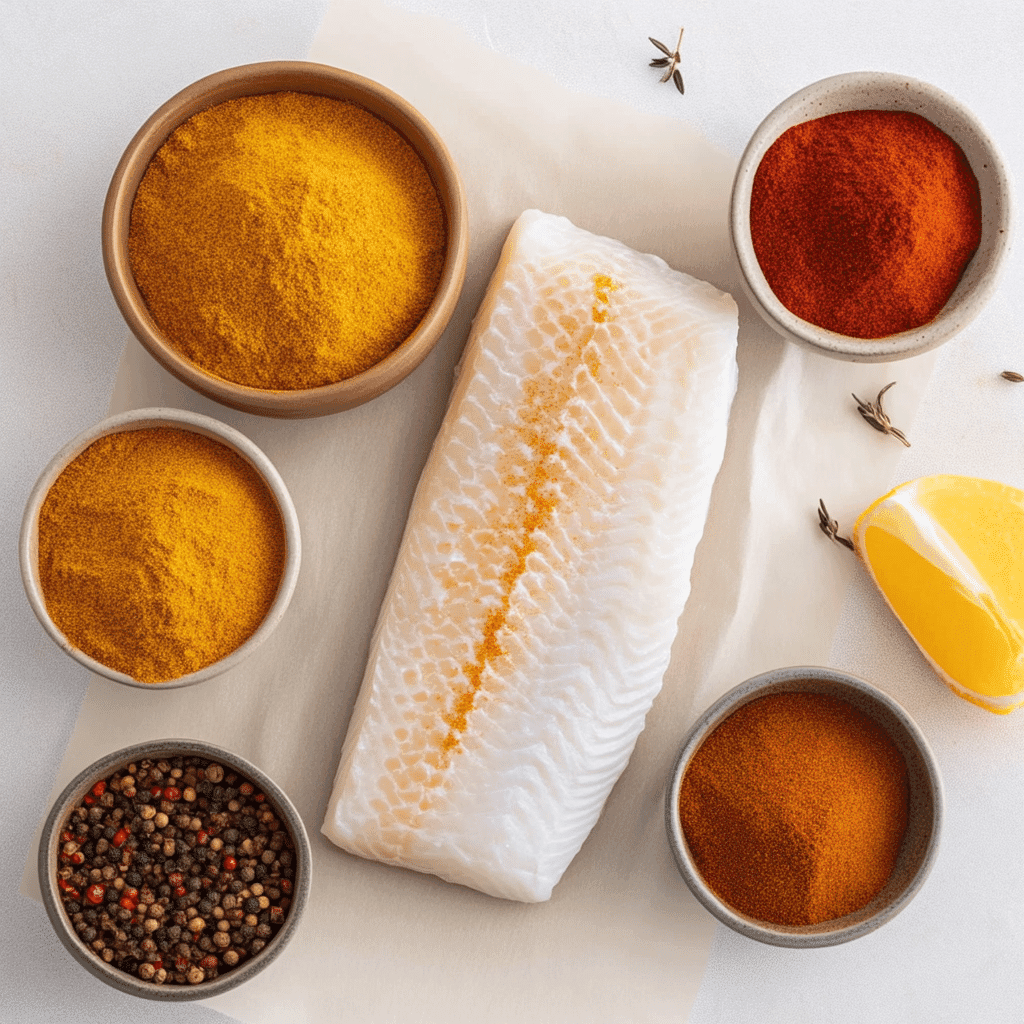

Jerk Fish: Easy Jamaican Recipe Bursting With Bold Flavor
- Total Time: 13 minutes
- Yield: 4 servings
Description
Bold, spicy jerk fish cooked in minutes. This easy Jamaican classic uses pantry spices for huge flavor with minimal effort.
Ingredients
3 tsp garlic powder
3 tsp onion powder
2 tsp kosher salt (or 1.5 tsp table salt)
3 tsp dried thyme
2 1/2 tsp brown sugar
2 1/4 tsp cayenne pepper
1 1/2 tsp smoked paprika
1 1/4 tsp allspice
1/2 tsp cinnamon
1/2 tsp nutmeg
4 thin white fish fillets (about 6 oz each)
3 tbsp extra virgin olive oil
Instructions
1. Mix jerk seasoning ingredients in a small bowl.
2. Pat fish dry. Press each fillet into seasoning on both sides.
3. Heat half the oil in a non-stick skillet over high heat.
4. Cook 2 fillets, presentation side down, for 2 minutes until crust forms.
5. Flip and cook 1 minute more until fish flakes and reaches 130°F.
6. Repeat with remaining oil and fish.
7. Let rest 2 minutes on rack before serving.
Notes
Use thin fillets around 1.5cm thick for best results.
Reduce cayenne for a milder version.
Leftovers keep for 2 days refrigerated. Not ideal for freezing.
Try seasoning on shrimp, chicken, or vegetables too.
- Prep Time: 5 minutes
- Cook Time: 6 minutes
- Category: Mains
- Method: Pan-Fried
- Cuisine: Caribbean
Tips for Sourcing and Prepping Thin White Fillets
The key to perfect jerk fish starts before the skillet. First, pat your fillets dry with paper towels. This helps the spice mix stick and gives you that crispy surface. Next, coat the fish generously in jerk seasoning, pressing the spices in to form a nice crust. Shake off the excess so you don’t end up with burned bits in the pan.
Use extra virgin olive oil for richness and to help crisp things up, especially in a non-stick skillet. When cooking, wait until the oil is shimmering and just starting to smoke—this ensures a sear that locks in flavor.
If you’re meal prepping or feeding a crowd, prep your fillets ahead and store them in the fridge for up to 24 hours before cooking. The longer they sit with the spices, the deeper the flavor. But for best texture, always cook just before serving.
Need a plant-based swap? Try using thick slices of eggplant or portobello mushrooms. They take well to jerk seasoning and can be grilled or roasted. For more vegetarian-friendly inspiration, check out my roasted cauliflower with tahini sauce.
“The key to an authentic Caribbean jerk dish is achieving the perfect balance of these essential ingredients.”
How to Make Jerk Fish Step-by-Step
The Jerk Seasoning Blend You’ll Use Again and Again
Creating your own jerk spice blend is surprisingly simple—and the flavor payoff is massive. Most of the ingredients are pantry staples: garlic powder, onion powder, dried thyme, allspice, paprika, cinnamon, nutmeg, cayenne, salt, and a touch of brown sugar for balance. This blend gives jerk fish its signature punch, layering heat with sweetness and warmth.
If you’re sensitive to spice, reduce the cayenne or swap it for black pepper or chili flakes. You’ll still get that earthy, smoky base without overwhelming heat. Once you mix the blend, pour it into a shallow dish wide enough for one fillet. This lets you press the fish directly into the seasoning, coating both sides evenly.
This seasoning isn’t just for fish. Store leftovers in an airtight jar and use them on shrimp, chicken, or roasted veggies. I’ve even rubbed it on tofu before pan-frying with great results. It’s a shortcut to Caribbean flavor that never fails. If you love simple blends that pack flavor, try my homemade Cajun seasoning next.
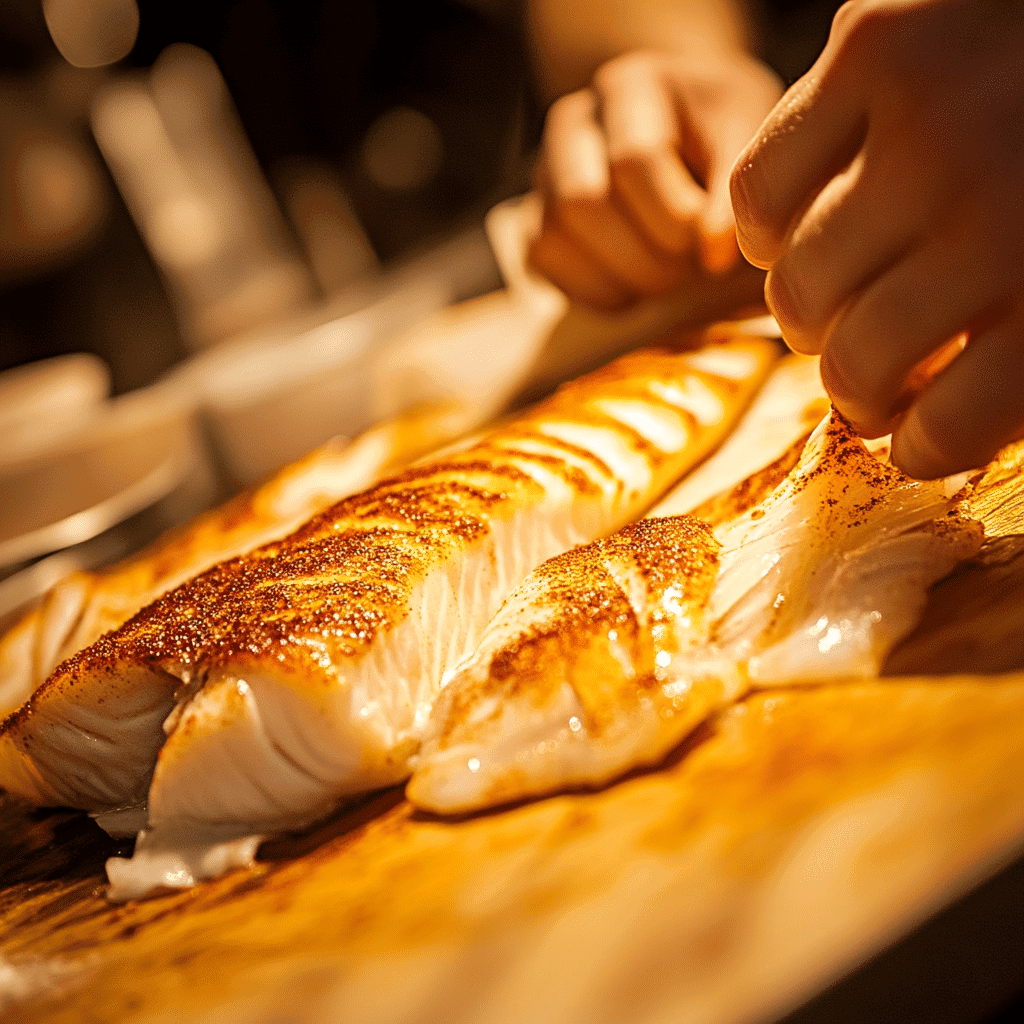
Pan-Frying to Perfection – Crispy Crust, Flaky Inside
Once your fish is coated, it’s time to cook. Heat 1–2 tablespoons of oil in a large non-stick skillet over high heat. You’ll know it’s ready when you see faint wisps of smoke—don’t rush this step. Carefully lay the fillets in the pan, presentation side down, and cook for 2 minutes. You’re aiming for a deep bronze crust with a reddish tint.
Flip the fish and cook the other side for 1 minute. Don’t overcook—it should flake easily and hit 130°F (55°C) internally. Rest the fillets on a rack for 2 minutes after cooking. This keeps the crust crisp and the inside tender.
If you’re prepping ahead, coat the fish and refrigerate up to a day in advance, but always cook just before serving for that perfect sear. For more easy pan-cooked dinners, check out my go-to pan-fried lemon tilapia—a great alternative with the same ease and crispiness.
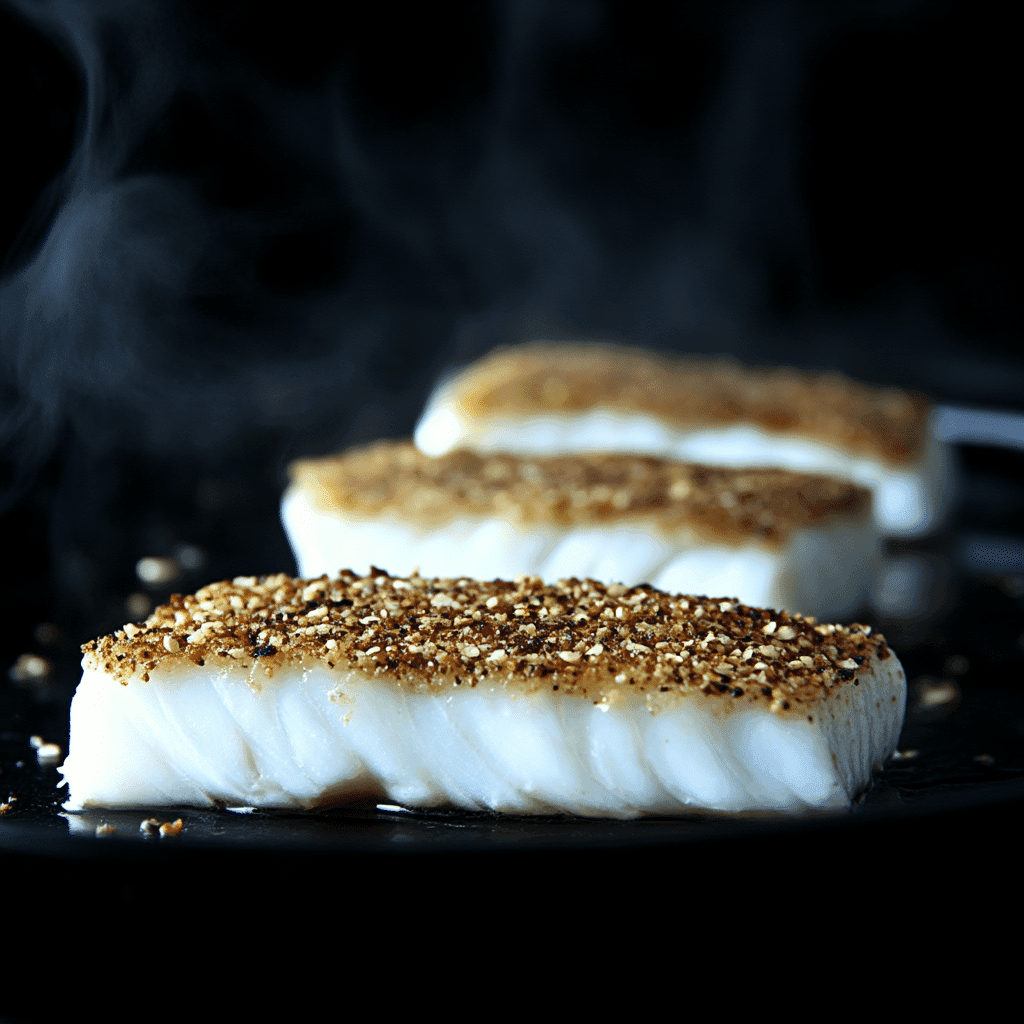
Pairing & Serving Jerk Fish Like a Local
Perfect Sides: From Jamaican Slaw to Coconut Rice
Jerk fish is flavorful on its own, but pairing it with the right sides takes the meal to a whole new level. Think bright, creamy, and cooling to balance that bold spice crust. My favorite combo? A fresh Jamaican slaw with cabbage, lime juice, and a hint of mayo, served alongside coconut rice and peas just like you’d get at a beachside shack in Montego Bay.
The slaw gives crunch and brightness. The rice, infused with coconut milk and thyme, provides a subtle sweetness that mellows the spice. Add some fried plantains or a splash of mango salsa, and you’ve got a plate that hits every note spicy, sweet, tangy, and rich.
If you’re making a meal plan, consider doubling your batch of Jamaican Coconut Rice to pair with other dishes throughout the week. It works beautifully with grilled chicken or even a simple black bean stew.
Leftovers, Storage, and Making It Work for Meal Prep
This dish isn’t just great fresh it’s also a smart make-ahead meal. Jerk fish keeps well in the fridge for up to two days, making it a strong contender for lunch prep. Just store the fish in a shallow container to protect the spice crust, and reheat gently in a skillet to keep the outside crisp.
It’s not ideal for freezing since the spice crust can turn soggy, but you can freeze the raw, seasoned fillets and cook them straight from thaw. That makes weeknight dinners even easier. Pair leftovers with a salad, wrap in flatbread with slaw, or flake the fish over a bowl of rice and beans.
Need more inspiration for leftovers? Try making a quick taco with jerk fish, slaw, and a drizzle of lime crema. Or toss it into your next grain bowl. For other recipes that handle leftovers well, I recommend this spiced chickpea and couscous salad or my favorite slow cooker pulled chicken.
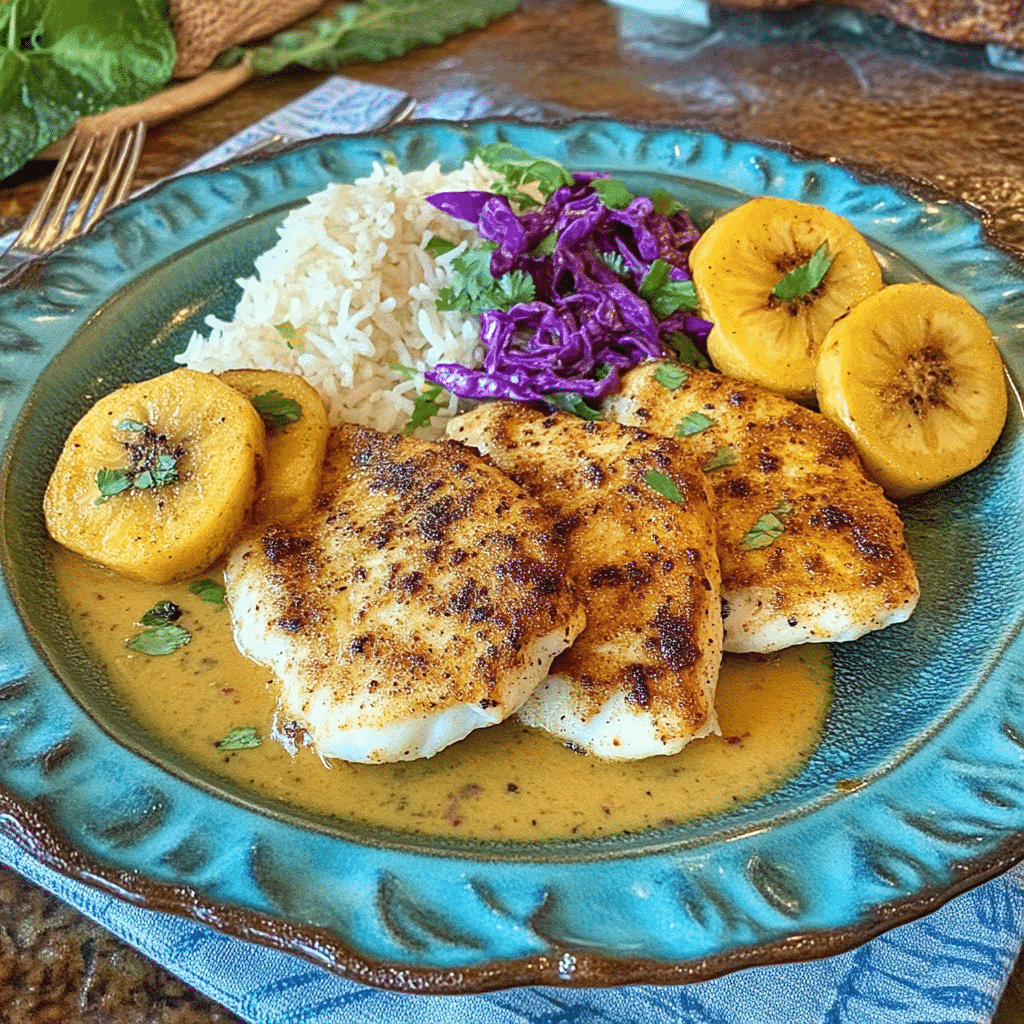
FAQ Section
For more on how jerk seasoning became Jamaica’s signature flavor, read this cultural guide.
What fish is best to jerk?
Thin white fish fillets like snapper, cod, tilapia, or mahi-mahi work best. They cook quickly and absorb jerk seasoning well. Just make sure the fillet is no more than 1.5cm thick.
Is jerk good on fish?
Absolutely. Jerk seasoning is bold and spicy, making it a fantastic match for mild fish. It forms a crispy, flavorful crust without overpowering the delicate texture of the fish.
What does “jerked” mean in cooking?
In Jamaican cooking, “jerked” refers to a method of seasoning and cooking with a spice blend featuring allspice, Scotch bonnet peppers, thyme, and other warm spices. It can be used on fish, chicken, pork, or even vegetables.
What does jerk flavor taste like?
Jerk seasoning is spicy, smoky, earthy, and slightly sweet. The combination of cayenne, allspice, cinnamon, and brown sugar gives it a deep and complex flavor that builds with each bite.
Conclusion
Jerk fish is one of those rare dishes that offers big, bold flavor with minimal effort. It’s spicy but balanced, fast but satisfying, and completely customizable. Whether you’re serving it with rice and slaw or tucking it into a taco, it’s sure to become a weeknight staple. With a little prep and a hot pan, you can bring a taste of the Caribbean straight to your dinner table.

